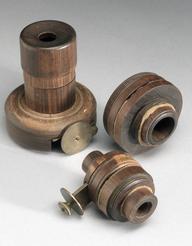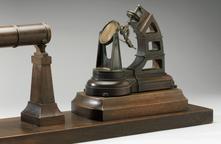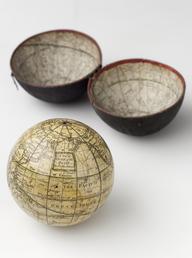



















Plaster relief model of a portion of the lunar surface by James Nasmyth, 1844, showing the lunar craters Maurolycus and Barocius, compared to Earth's Mount Vesuvius. There is a scale in red at bottom centre.
Nasmyth observed the Moon nightly, making carefully annotated sketches of specific features. As the Moon orbited the earth, different angles allowed him to judge the height of lunar mountains and depth of the craters. Working with plaster, he then modelled detailed sections of the surface in three dimensions. Many 19th-century artists used plaster models to plan their work, as well as learning from them in museums. Plaster could stand in directly for original objects, even the distant Moon. Here Nasmyth compares the size of Mount Vesuvius on the Earth with the lunar craters Maurolycus and Barocius. He hoped to support his theory that the Moon was volcanic and could therefore inform ideas of terrestrial geology.
Details
- Category:
- Astronomy
- Object Number:
- 1931-862
- Measurements:
-
overall: 3.5433 x 23.622 x 20.0787 in.; 90 x 600 x 510 mm
- type:
- models (representation) and lunar crater models
- credit:
- Royal Astronomical Society




